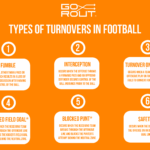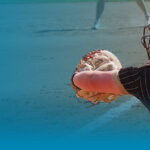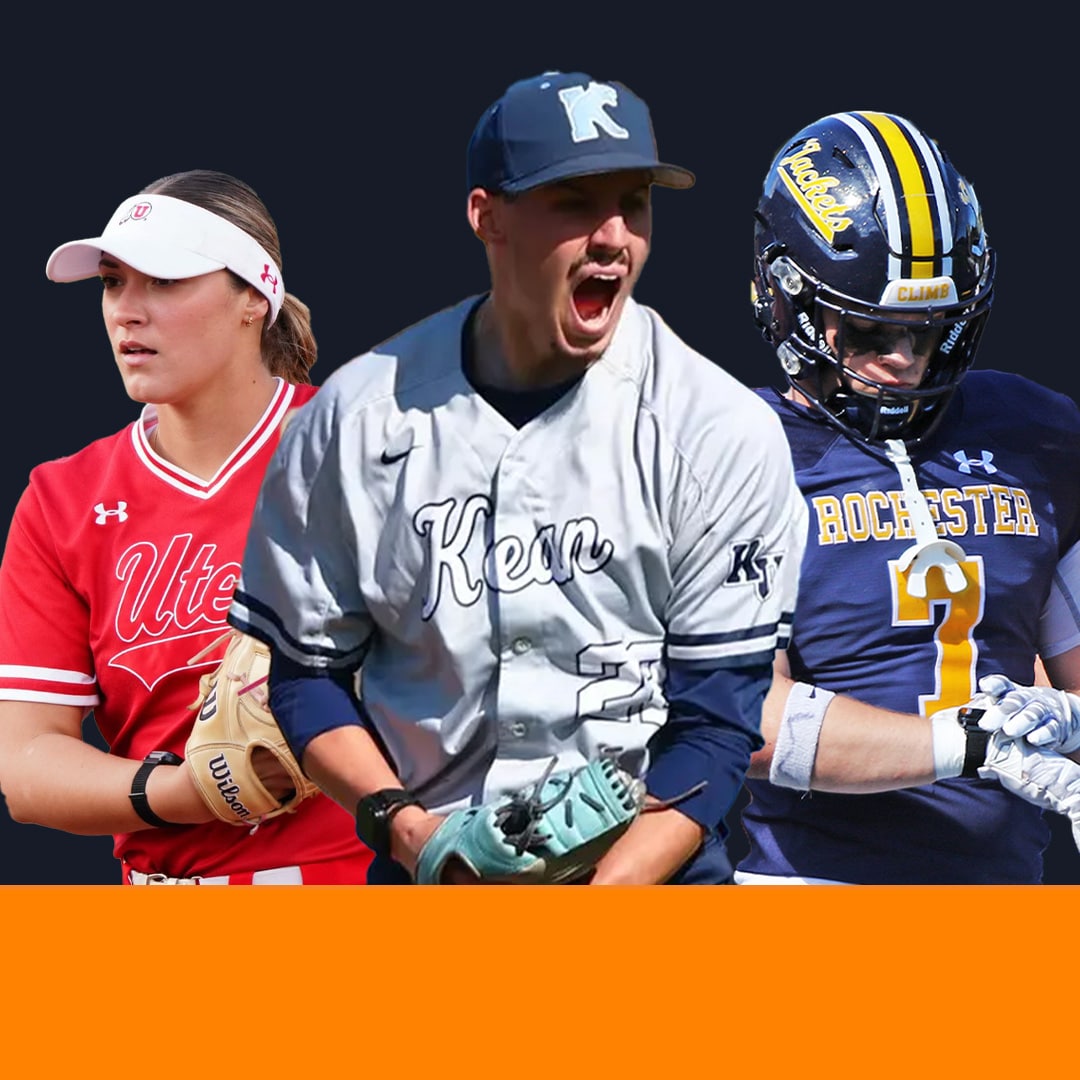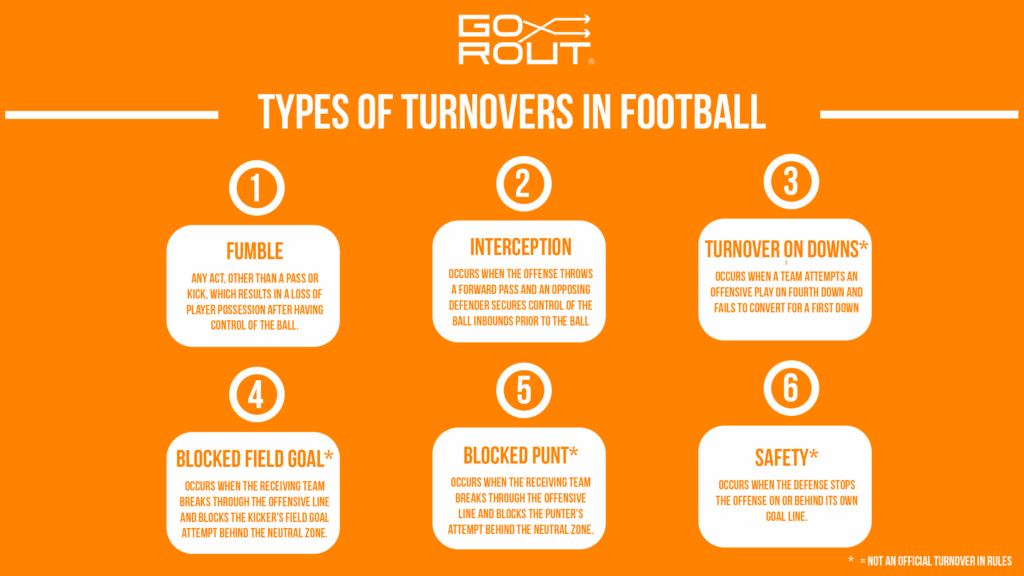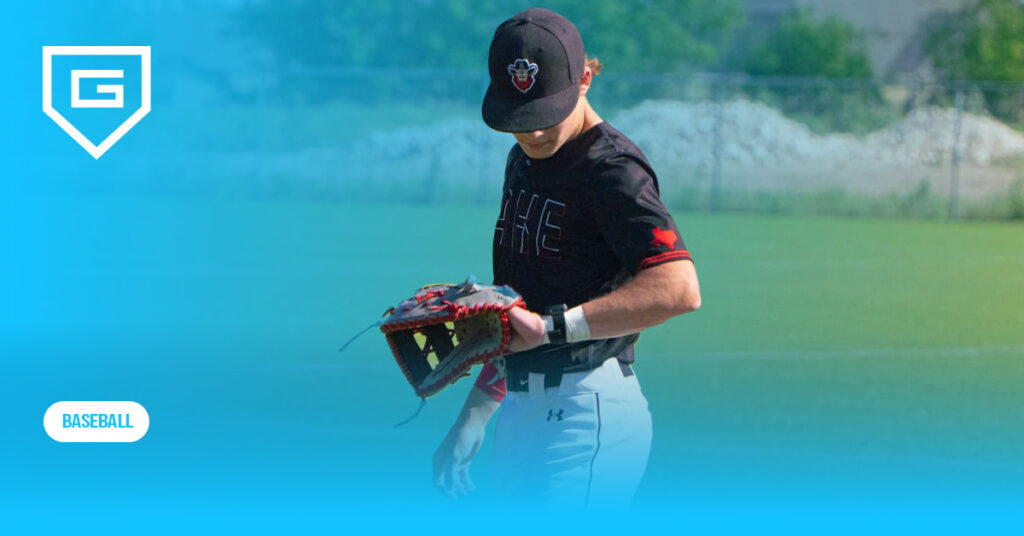Youth Softball Catcher’s Gear: Equip Your Team with the Best Protection
Reading Time: 11 minutes
Reading Time: 11 minutes
As a coach, you probably worry about finding gear that’s safe, comfortable, and durable—without spending a fortune. Youth catchers need equipment that fits right, grows with them, and shields them from fast pitches.
The best youth softball catcher’s gear should meet safety standards, such as NOCSAE certification, and generally costs between $100 and $300 for a full set.
Searching for youth catcher’s gear can get overwhelming with all the choices. Let’s walk through how to pick equipment that fits your young athletes, meets league rules, and doesn’t blow your budget.
Summary
Choosing the right youth softball catcher’s gear matters for safety and performance. A typical set has a helmet, chest protector, and leg guards made just for softball.
Softball catcher’s gear is specially engineered for female athletes, ensuring a better fit and enhanced protection.
Most quality youth gear costs between $100 and $200, but top brands can run over $300 for a full set.
Size is important. Most youth gear comes in small (12 years old & under), medium (12-15 years old), and large (15+ years old), so players of all ages get the right fit. Although the gear is meant for specific age groups, players of all sizes can wear it, no matter how old they are. For example, a 15-year-old who’s on the smaller side might still fit into a small size that’s usually for kids 12 and under.
Adult sizes are also available for older or more advanced players, including high school, college, and elite-level athletes.
Safety certification isn’t optional. Always check for NOCSAE certification, especially on helmets and chest protectors with Commotio Cordis standards.
Trusted brands like GoRout Diamond for advanced pitch-calling wristbands and Easton, Mizuno, and Rawlings for standard catcher’s gear are known for their high-quality equipment, making them reliable choices for youth players.
GoRout Diamond stands out as an advanced sports technology solution that fundamentally transforms how youth softball teams communicate and perform on the field.
Unlike traditional methods that rely on hand signals or verbal cues—often leading to missed signs, confusion, or even sign stealing—GoRout Diamond streamlines every aspect of coach-to-player communication with a single tap on the coach’s app.
For youth softball programs aiming to maximize safety, efficiency, and performance, GoRout Diamond represents the future of on-field communication.
Get a quote or visit the webshop now.
The Basics To Youth Softball Catcher’s Gear

Youth softball catchers absolutely need proper protective gear to stay safe behind the plate.
When gearing up for the season, it’s important to understand the unique needs of youth players to ensure they have the right equipment.
The best youth catcher’s gear set includes four main pieces: a mask, chest protector, leg guards, and a special mitt.
Size considerations
The physical size of a player is important for gear selection. A 9-year-old who is above average in size for their age may need to wear larger equipment, while a smaller 15-year-old requires smaller gear.
In general, here are sizing recommendations:
- Age 8-12 (Intermediate): Usually fits smaller frames
- Age 13-15: Mid-size gear works best
- Travel softball players need tougher gear due to increased game frequency
It’s worth investing in gear that meets NOCSAE safety standards. Complete sets are convenient, but buying individual pieces lets you fine-tune the fit for your player.
Most youth catchers also like having extra protective items like throat guards and knee savers. These little add-ons really help during long tournaments.
Essential Gear Components For Youth Softball Catchers

In fastpitch softball, specialized fastpitch catcher’s gear is key to meeting the demands of the game, providing the safety and performance needed for young athletes.
Each piece does its job, protecting while letting kids learn the position comfortably.
Catcher’s helmet and face mask
The helmet is the first layer of defense for your young catcher. These days, youth helmets have extra jaw coverage and smart padding for better safety.
Look for helmets with:
- NOCSAE certification
- A strong, impact-resistant shell
- Good ventilation
- Moisture-wicking liners
- Adjustable sizing
Many helmets come in bright team colors and have antimicrobial liners to fight odor.
The best youth masks use steel or titanium bars that keep faces safe but don’t block vision.
Chest protector: Safety and fit for young athletes
Chest protectors soak up hard impacts and help prevent serious injuries. For youth catchers, getting the right size is a must—too big, and they can’t move; too small and they’re exposed.
Key features to look for:
- Commotio Cordis (heart guard) protection
- Adjustable shoulder straps
- Light, breathable materials
- Segmented design for flexibility
The best chest protectors wrap a bit around the sides for extra coverage.
Top designs follow the natural shape of the body, enhancing comfort and allowing for better movement. Moisture-wicking liners are a lifesaver during hot summer games, keeping players cool and comfortable.
Youth protectors usually run 12-14 inches for younger kids and 15-16 inches for teens. Look for reinforced collarbone padding and girl-specific shapes when needed.
Leg guards: Comfort, protection, and mobility
Leg guards for youth softball should protect but not weigh catchers down. Newer, lighter materials let kids move quickly and block balls without feeling clunky.
Must-have leg guard features:
- Double knee padding
- Wrap-around shin guards
- Quick-release buckles
- Breathable padding
Youth sizes usually range from 12-14 inches for beginners to 14-16 inches for older players. That’s measured from mid-knee to ankle.
Some guards now have gel inserts at key impact spots for better protection. Adjustable straps help keep guards in place all game long.
Pick guards with removable liners—they’re much easier to clean.
Catcher’s mitt: Key features for youth players
A good catcher’s mitt is essential for learning solid technique. Youth softball mitts are different from baseball—they’re bigger with a deeper pocket for the larger ball.
Things to consider:
- 33-inch size for 11-inch softballs
- Deep, wide pocket
- Extra padding around the thumb
- Lightweight but tough leather
Breaking in a new mitt can be a pain, but many brands now pre-oil them to speed things up. Reinforced palm pads help absorb those repeated impacts.
Look for adjustable wrist straps that can grow with your player. The thumb and pinky positions should provide enough stiffness for proper ball control while remaining comfortable.
The importance of the right box set
Box sets are super convenient and can save money for youth catchers. They make sure all the pieces work well together for the best protection and performance.
When you’re looking at box sets, think about:
- Age-appropriate sizing
- Matching brands for consistency
- Team color options
- Storage bag included
Many youth sets toss in extras like throat guards and knee savers—items you might forget if you buy pieces separately. The best sets can adjust as your player grows.
For example, The “Jen Schro The Very Best” set from Easton is designed specifically for the female athlete’s body, ensuring a tailored fit and optimal performance.
Top brands test their sets as a whole, not just individually. That usually means better full-body protection than mixing and matching from different companies.
For teams with several catchers, it’s smart to buy shared gear with adjustable features to fit everyone.
Meet GoRout Diamond: Top-Rated Softball Gear
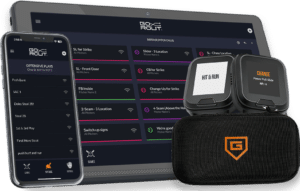
GoRout Diamond is shaking up softball with its electronic pitch-calling system. It wipes out confusion on the field and stops sign-stealing, which is a pretty big deal for youth softball teams.
How GoRout Diamond works for coaches

GoRout Diamond gives coaches a simple, powerful way to run the game.
You can build pitch calls, offensive plays, and defensive shifts right from the coach’s web app. You can create as many custom plays as you want.
Using the mobile app during practices and games, you can:
- Send pitch calls instantly
- Set up defensive positions
- Signal bunts and steals
GoRout Diamond lets you send 140-character position-specific messages, while similar products only give you 10.
You can share more detailed and helpful info with the players, which makes communication and understanding better during practices or games.
It can help everyone perform better and know exactly what they’re supposed to do on the field.
You also don’t need WiFi or a tricky setup at the field. GoRout uses GoRout Air™ with LTE coverage from KORE Wireless, so it works anywhere your team plays.
How GoRout Diamond works for players
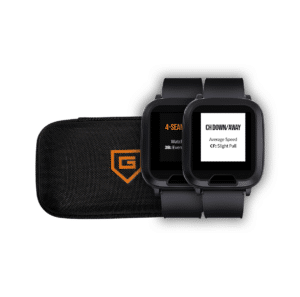
Players get clear, instant instructions through softball wristbands that work right out of the box. There’s no pairing or programming needed—just turn them on and go!
These pitch-calling devices have advanced features:
- Bright screens that are easy to read in any lighting
- Light and dark mode for day or night games
- Weather-resistant build for rain, heat, or snow
- 4-way privacy screens to keep opponents from peeking
- Full encryption for secure team communication
Young catchers especially appreciate the direct pitch instructions. The displays make sense even with all their youth softball equipment on, unlike hand signals that can get missed.
Key benefits of GoRout Diamond

GoRout Diamond stands out from old-school communication and other electronic systems with some unique perks.
Game-changing analytics:
- Live pitch charting during games
- AI compares pitch intent to actual results
- Performance insights you just can’t get elsewhere
Compliance and security:
- NFCA official sponsor status
- In-game compliance at many levels
- End-to-end encryption
Superior support:
- Full-coverage warranty, including breakage
- 10+ system updates each year (most competitors don’t bother)
- Developed by coaches who know the field
It’s a high-tech solution for youth softball programs chasing a real edge in 2025. Numerous testimonials and case studies confirm this.
Get a quote or visit the webshop now.
Protecting Your Players with Proper Catcher’s Gear
Catcher’s gear protects players from fastballs and collisions that can really hurt. Good gear covers the head, chest, shins, and hands.
Ensure your catcher’s gear fits snugly but doesn’t restrict movement.
Chest protectors should extend from the neck to the waist, and shin guards should cover from the knee to the ankle.
Check gear often for cracks, tears, or worn padding. Swap out anything damaged right away—it’s just not worth the risk.
In hot weather, try lightweight, breathable gear that keeps players cool without sacrificing safety.
Clean gear regularly to fight off bacteria and help it last longer. You can clean most parts using mild soap and water; there’s no need for anything fancy.
Youth Softball Catcher’s Gear Bags And Storage Solutions
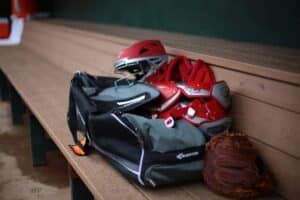
Getting the right bag for your young catcher’s gear keeps everything organized and protected. The right bag makes carrying all that bulky equipment way easier.
Key features to look for
- Separate spots for helmet, chest protector, and leg guards
- Ventilated sections to cut down on stink
- Durable, water-resistant materials
- Comfortable straps or wheels
- Extra pockets for small stuff
- Name tag holder for easy ID
Your youth catcher’s equipment isn’t cheap, so keeping it safe in a good bag does save money in the long run.
Specialized Youth Softball Gear: Catchers Vs. Other Positions
Catchers need the most specialized gear in softball—a helmet, chest protector, shin guards, and a mitt. Other positions don’t have to suit up like that for every pitch.
Check out these position-specific equipment differences.
| Position | Required Gear | Special Features | Typical Cost |
| Catcher | Helmet, chest protector, shin guards, mitt | Face mask, throat guard, padding | $250-$300 |
| Infielder | Glove, cleats, batting helmet | Smaller gloves, flexible movement | $100-$125 |
| Outfielder | Glove, cleats, batting helmet | Larger gloves, sunglasses | $110-$140 |
| Pitcher | Glove, face mask (optional) | Heart guard, padded shorts | $90-$110 |
Upgrade your catcher’s gear when players outgrow it or every 2-3 seasons for safety. Elite youth players or those competing at higher levels may benefit from gear designed for advanced performance and protection.
For other positions, you’ll usually need a new glove every 1-2 seasons, depending on use.
When shopping for your team, don’t forget that catchers need extra training to use their gear right. Plan for that in your practices.
Maintaining And Cleaning Youth Softball Catcher’s Gear
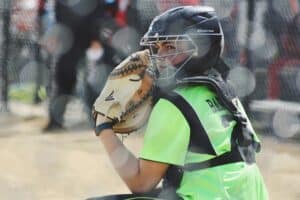
Regular cleaning and maintenance keep the catcher’s gear safe and ready. Good care can stretch your gear’s life and save you from buying new items too soon for regular or travel ball.
Cleaning your gear
- Remove dirt and debris after each game
- Wipe equipment with antibacterial wipes to kill germs
- Wash with mild soap and water weekly for a deeper clean
- Let gear air dry fully before you stash it away
- Never use a washing machine for your equipment
For helmets and masks, grab a disinfectant spray made for sports gear to help prevent skin issues. Wipe the inner padding often to get rid of sweat and oils.
Spot clean chest protectors with a damp cloth. If you’re fighting stubborn stains, try handwashing—machines can wreck the padding.
Maintenance tips
- Check for loose stitching or broken pieces every month
- Tighten all straps and buckles before each game
- Keep gear away from direct sunlight when storing
- Use a glove mallet to reshape your catcher’s mitt regularly
- Condition mitts with leather conditioner every few months
Knee savers and leg guards need a little extra love, especially at the hinges and straps. If the elastic wears out, swap it right away so your player stays protected.
Staying Up-To-Date With Youth Softball Catcher’s Gear Trends
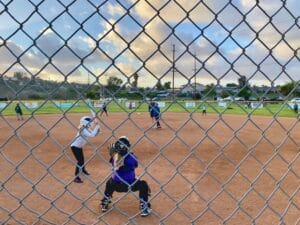
Youth softball catchers have way better gear these days. New tech focuses on safety and comfort, and it can make a young catcher feel like a pro.
Recent innovations worth your attention:
- Lightweight composite masks with better visibility
- Quick-release buckles so kids can gear up fast
- Moisture-wicking padding to keep players cooler
- Impact-absorbing materials that help reduce injuries
- Adjustable chest protectors for growing athletes
How you can use new technology in training:
- Record practices with players in advanced gear to study their form
- Try smart equipment with impact sensors to spot weak points
- Use adjustable training gear to mimic different game situations
- Lightweight practice gear helps with longer sessions
When you shop for gear, put protection and comfort at the top of your list.
The best youth catcher’s equipment combines safety features with ergonomic designs that let kids move naturally behind the plate.
Conclusion About Youth Softball Catcher’s Gear
Picking out the right catcher’s gear for your youth softball team is key for both performance and safety. Good equipment helps the kids feel confident and safe while they’re behind the plate.
Don’t settle for low quality. Budget-friendly options exist that still meet safety standards. Many youth softball equipment packages now feature adjustable components, allowing the gear to grow with your player.
Proper fit matters as much as quality. Too loose or too tight? That’s a safety hazard and can mess with your catcher’s mobility.
Keep up with regular cleaning and check for damage often. Maintenance goes a long way in making gear last and keeping your player safe.
In the end, investing in the right catcher’s gear does more than protect your team. It builds confident players who can focus on their skills—not just on staying safe.
To take your team’s performance and communication to the next level, consider implementing GoRout Diamond’s advanced communication system.
It streamlines coach-to-player messaging with instant, secure and digital signals—eliminating confusion and boosting on-field results.
Get a quote or visit the webshop now to explore how GoRout can support your youth softball program.
FAQs About Youth Softball Catcher’s Gear
How do you size a youth softball catcher’s gear?
Measure the player’s chest (for chest protector), shin (for leg guards), and head circumference (for helmet).
Match these measurements to the manufacturer’s size chart to ensure a snug, but comfortable fit for safety and mobility.
Here’s a helpful size guide.
Is there a difference between youth baseball and softball catcher’s gear?
Yes. While some gear overlaps, a softball catcher’s gear is often designed for greater mobility and comfort to meet the unique demands of fastpitch softball. Fit and protection may also differ slightly due to body proportions and ball size.
What equipment does a softball catcher need?
A softball catcher needs a helmet with a face mask, chest protector, leg guards, and a catcher’s mitt.
What is the best fastpitch softball catcher’s gear?
Top brands include All-Star, Easton, and Mizuno, known for quality protection, comfort, and durability.

